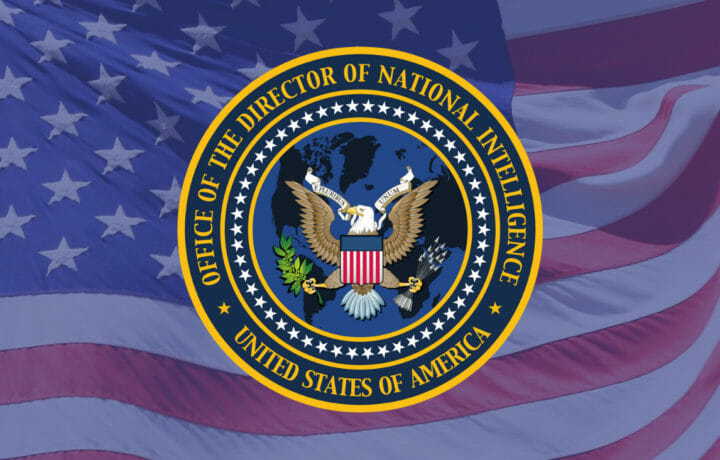The usual players dominate the 2023 Office of the Director of National Intelligence Annual Threat Assessment Report for 2023 – Russia, China, Iran and North Korea. Coupled with the very real effects of global warming and the threat to the global food supply.
Those who read our 2023 espionage threat trends in January, will not be at all surprised by the conclusions and findings contained within this report. Similarly, the recent National Cybersecurity Strategy decisions coming out of the White House makes even more sense when read against the backdrop of the IC’s Threat Assessment.
The ODNI threat assessment
ODNI identifies two primary points of concern which gives the nation grave concerns.
Nation state and non-state actors of all sizes – “great powers, rising regional powers … array of non-state actors will vie for dominance in the global world order.” The next few years are considered critical in the determination of “who and what will shape the narrative” most especially within the context of Russia and the West.
And then there are of course the challenges presented by issues which are not unique to any country – “climate change, and human and health security, are converging as the planet emerges from the COVID-19 andemic and confronts economic issues spurred by both energy and food insecurity.” Coupled with technologies whose rise carry with it the “potential to disrupt traditional business and society with both positive and negative outcomes, while creating unprecedented vulnerabilities and attack surfaces” are of concern.
The assessment highlights the competition between democratic and authoritarian forms of government and the expected uptick in actions by regional players, Iran and North Korea, to disrupt the status quo and “garner more power for themselves, threatening U.S. allies in the process.”
China, Russia, North Korea and Iran
Espionage is one of those levers which is being used to good effect by China, Russia, North Korea and Iran as they pursue their own national agenda, and their intelligence apparatus responds to tasking from their respective policy makers.
1. China
Within this context, China views its own efforts are legitimate and are in response to the perceived threat posed by the United States and the West in their attempt to “prevent China’s rise and undermine CCP rule.” Additionally, China’s continued reluctance to engage in a meaningful manner to determine the origin of the COVID-19 pandemic, now in its fourth year, is a continued tension point in the strained relationship between the West and China. China’s efforts include, leveraging their “dominate position in global supply chains” as they execute their own “whole-of-government” strategy. Their investments in counterspace operations and the alarming uptick in the buildout of ICBM silos (hundreds of new silos are being built) speaks to their desire to be fully prepared for whatever the future may portend. “China will remain the top threat to U.S. technological competitiveness” speaks starkly to the weight which China brings into the competitive ring. This is also, according to the administration, where the President wishes to engage China as a competitor and not as an adversary. Yet, China’s actions in the both the espionage arena and disinformation/misinformation are formidable. Their tried and true M.O. to recruit talent via social network engagement, talent with access to intellectual property or outright buy advanced technologies can be expected to continue. Within the world of cyber, the assessment soberingly notes that China is the “broadest, most active, and persistent cyber espionage threat to the United States.” The conclusion “China’s cyber services and broadly used software, and other targets potentially rich in follow-on opportunities for intelligence collection, attack, or influence operations” can be expected to continue and in a time of conflict, China could successfully attack U.S. infrastructure and “
2. Russia
Not unexpectedly Russia’s unwarranted invasion of Ukraine dominated the assessment, and while Russia has no desire for the conflict to exit the borders of Ukraine, “the risk for escalation remains significant.” Their willingness to project their power, via the Wagner group militarily and via economic engagements in Africa and the Americas. Furthermore, they have no governors on their accelerator which engages the West, specifically the United States elections for “malign influence as part of its larger foreign policy.”
The Russian cyber capabilities with respect to the U.S. and allies will continue to “target critical infrastructure, underwater cables and industrial control systems.” While also employing the tools of espionage to obtain information of interest to the Russian policy makers. Russian human spy operations are not going away anytime soon.
3. Iran
“Iran will continue to threaten U.S. persons directly” says it all, as Iran works to engage the U.S., largely through the expat community in the U.S., where it is “developing surrogate networks.” The intent is to undermine U.S. influence in the Middle east. The spanner in Iran’s plans, however, can be found within the internal cultural protests the regime’s treatment of women, and the paranoia feeding the perceived notion that there exists foreign meddling. Additionally, Iran has and will continue to target U.S. infrastructure via “aggressive cyber operations.”
4. North Korea
The DPRK has shown itself to be adroit thieves. They conducted a heist which netted them “$625 million from a Singapore-based blockchain technology firm.” They also continue to invest and improve upon their “advanced social engineering techniques.” One would be daft to think that their technologists and practitioners are not going to school with each engagement to improve their techniques in their effort to fund the regime. Furthermore their espionage efforts against government and all sectors can be expected to continue, in support of their policy objectives. Frist among those would be their drive to maneuver into a position of power within the Korean peninsula is obvious as they continue to push nuclear research, testing and missile capabilities.
The ODNIs threat assessment is sobering, yet also provides a pragmatic delivery on the state of the world, with emphasis on the four adversarial nations.




